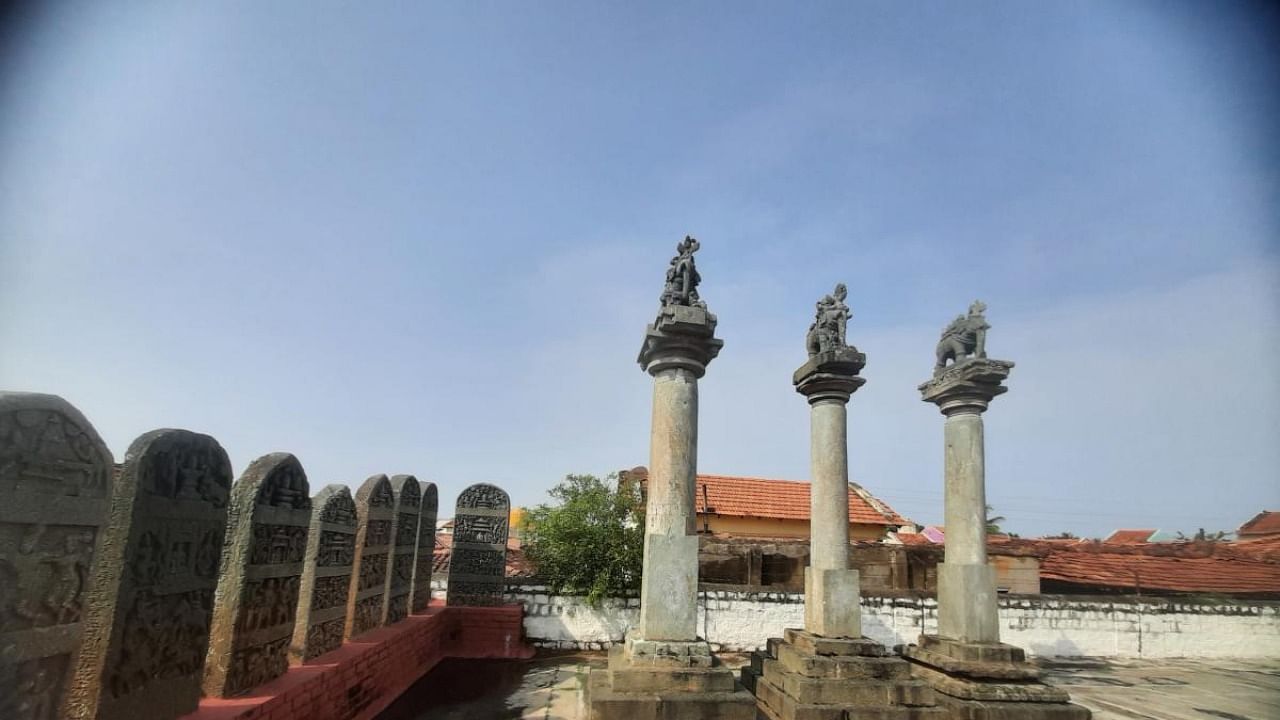

In a small village northeast of KR Pete in Mandya district, is a unique hero stone with inscriptions.
The Agrahara Bachahalli village houses the hero stone. The inscription is a tribute to a feudal group of warriors called the Garudas who were a part of the Hoysala polity. The pillars can be found in the temple premises of Hunaseshwara in the village.
The Garuda group of warriors carried forward the Hoysala sovereignty just as the Garuda, in Hindu mythology, carried Lord Vishnu forward as his vehicle.
These three pillars, about 15 feet in height, were erected during the reign of Ballala I and Narasimha III of the Hoysala dynasty. They ruled from their capital, Dwarasamudra (presently Halebidu). The pillars were erected in memory of warrior heroes who sacrificed their lives for the welfare of the kingdom.
A Hoysala warrior administrator, who desired to become a Garuda to a monarch, had to take an oath and vow obedience and loyalty to the king.
These Garudas wore special symbols on their bodies in the form of gold or silver ornaments. Called gandapendera, this article was tied to their left ankle and jingled when they walked.
The partners of a Garuda would, in the same manner, abide by the oath by wearing an ornament.
The warriors who were subordinate to Garudas would also take an oath of obedience by giving bhase to their master and were similarly called lenkas.
These lenkas sacrificed their lives after the death of the Garuda to whom they served their oath.
Hero stone
The pillar in Agrahara Bachahalli depicts the valour of seven generations of Garudas of Gandanarayana-setti who belonged to Veera Bananju, a mercantile community. As faithful bodyguards for their Hoysala kings, they vowed to not live beyond the lifespan of their kings.
The family, associated with the merchant class, was probably later elevated by the Hoysalas to the rank of ruling elites.
These Garuda and lenka warriors played a significant role in many battles supporting their kings.
They not only excelled in martial qualities but also took an interest and excelled in arts and music. They held administrative positions and even provided patronage to many poets.
The Garuda feudal clan reached its zenith in the 13th century when they were subordinates to the Hoysalas under the samanta system (vassal or tributary chief). They were referred to as the 'Samanta Garudas'.
They played a significant role in the expansion of the Hoysala kingdom against the Chalukyas, Yavanas and the Cholas.